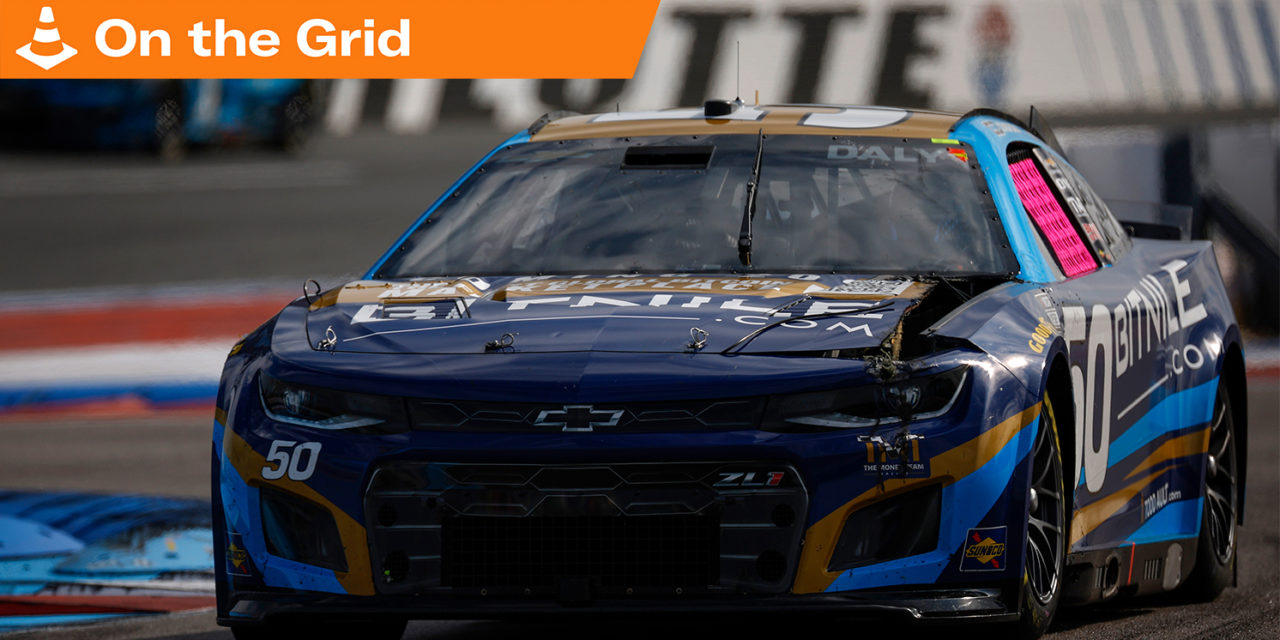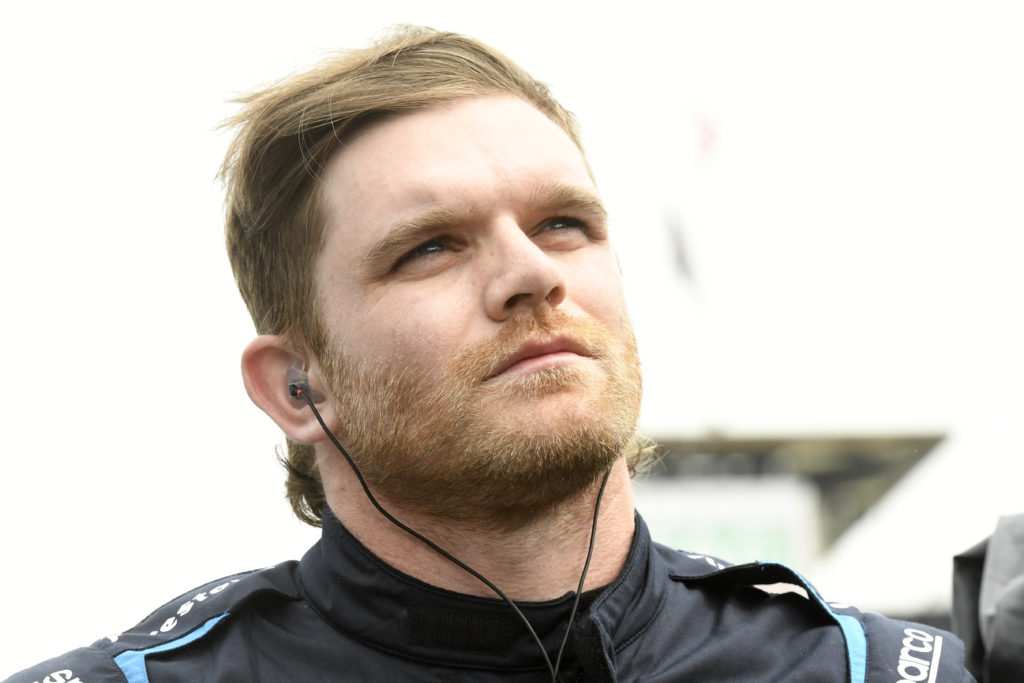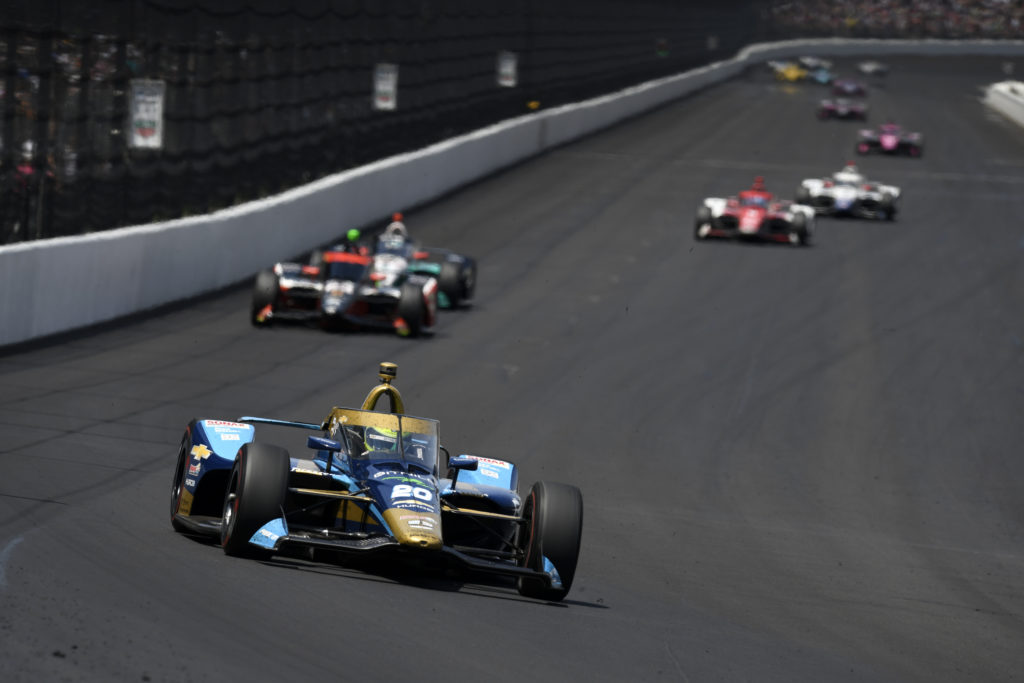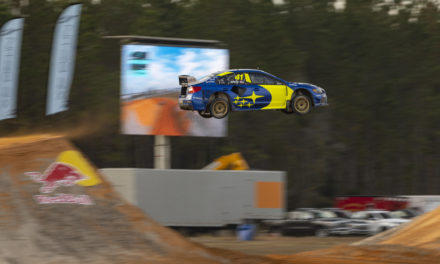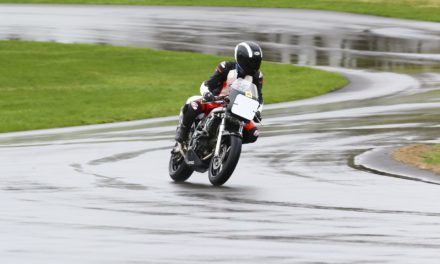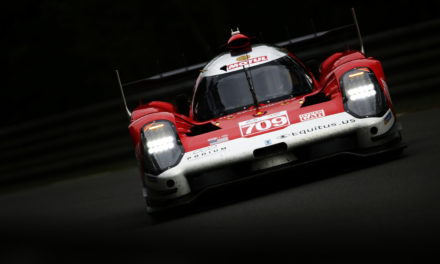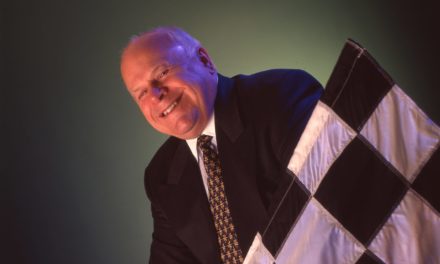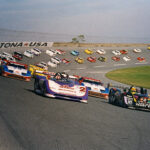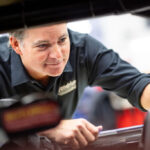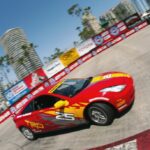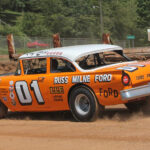“Bam!”
IndyCar regular Conor Daly’s NASCAR Cup Series debut began with a bang—literally—when the steering rack of his Camaro stock car failed on the fifth lap of practice, and he clobbered the wall during the Bank of America Roval 400 at Charlotte Motor Speedway.
“I was just a passenger at that point, which was not a really awesome situation,” he told me after the race in early October. “I’d never even fired up the car before that morning, and we had to fix the car after that. So I went into the race pretty lacking in experience.”
- Conor Daly (Photo by Michael Allio/Icon Sportswire via Getty Images)
- Daly drives into turn one during the 2022 Indianapolis 500 (Photo by Michael Allio/Icon Sportswire via Getty Images)
Clearly, Daly is a master of understatement, and during an up-and-down career that’s taken the Indianapolis native all over the world, he’s become accustomed to jumping feet first into motorsports fires. So when BitNile, the cryptocurrency firm that sponsors him in IndyCar, said it wanted to dip its toe in the NASCAR water, he immediately signed on.
Indy car racers have been moonlighting in stock cars at least since Mario Andretti and A.J. Foyt won the Daytona 500 in 1967 and 1972, respectively. But times have changed. Long gone are the days of sports car ringers like Boris Said and Ron Fellows being hired for one-off drives now that road courses are a staple of the Cup schedule and NASCAR drivers are just as adept at turning right as they are at turning left.

(Photo by Jared C. Tilton/Getty Images)
Since no seats were available in an established team, BitNile cut a deal with The Money Team, a small operation co-owned by retired boxer Floyd Mayweather. The team had a grand total of three Cup races to its credit, which wasn’t ideal. Fortunately, Daly has amassed plenty of varied experience over the past 15 years.
I first met Daly shortly after he’d parlayed a dominant championship season in Star Mazda into a ride in the GP3 series in Europe. Although he wasn’t able to follow the wheel tracks of his father, Derek, into Formula 1, the ever-persistent Daly eventually found a home in IndyCar. Last year, at the Indianapolis Motor Speedway, he was cheered wildly as a hometown hero while leading 40 laps in the Indy 500.
Although he’s best known for his open-wheel exploits, Daly has also raced prototypes and Lamborghinis in IMSA, and he’s even done a handful of races in NASCAR’s lower-tier Xfinity and Truck series. Daly knew the competition at Charlotte would be top of the class, but he said he was pleasantly surprised by the performance of the new-for-2022 NextGen stocker.

(Photo by Jared C. Tilton/Getty Images)
“Honestly, it’s a pretty sporty car,” he explained. “The brakes are very good. With the bigger wheel and more sidewall, there’s not as much crazy body roll as there would be in an Xfinity car. An impressive car, for sure, but still old-school in some ways. It has a classic sequential gearbox, so you lift on upshift and blip [the throttle] to downshift, which was cool.”
Daly knew that, with the extra weight and the lack of downforce, the NextGen car demanded a radically different driving style than the über-aggressive technique he uses in IndyCar’s Dallara DW12. But after missing out on most of practice and all of qualifying, he wasn’t sure what to expect when the green flag flew. Luckily, he got some pre-race advice from road racer-turned-Cup stalwart Michael McDowell.
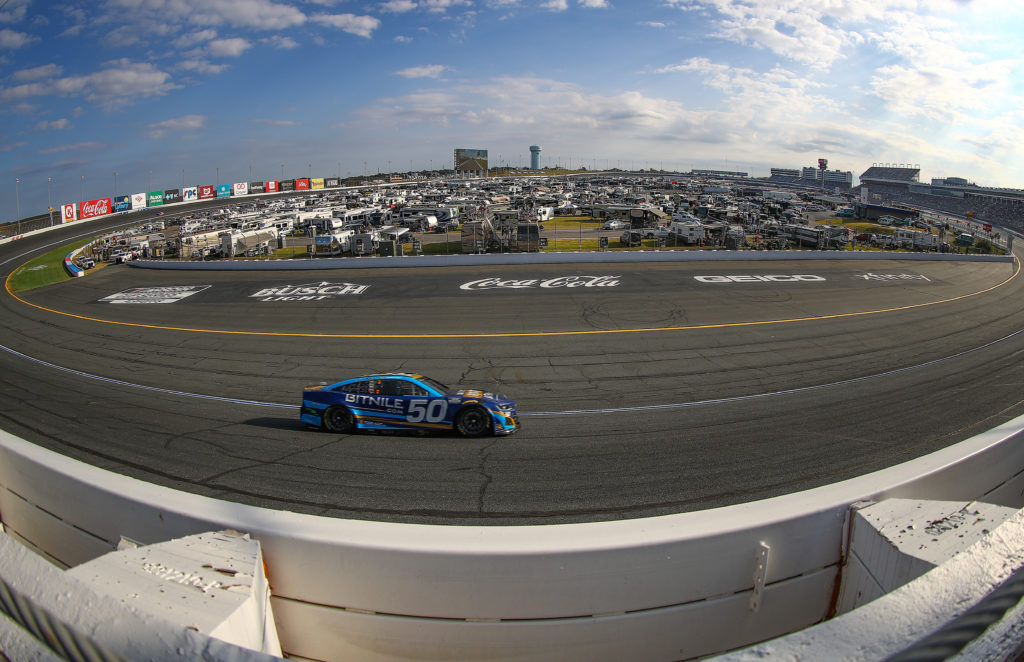
(Photo by Mike Mulholland/Getty Images)
“He said, ‘Do everything at 80 percent,’” Daly recalled. “Although the new car is quite a lot faster now than the previous-gen car, the brake zones are longer and the rolling speeds [through the corners] are lower than in an IndyCar. You have to take your patience level up by about 100 percent because, if you get too greedy with the brakes or with the throttle, the heavy weight of the car really [amplifies] a mistake.”
Daly learned this lesson the hard way when a way-out-of-whack brake-bias setting caused him to lock up – and destroy – a front tire. He lost another tire when he ran over a piece of debris. Oh, and completing the trifecta of misfortunes, an electrical fire in the cockpit necessitated a third unscheduled pit stop while frying the rear-view camera.
The stubbornly upbeat Daly preferred to accentuate the positives. Early on, he had fun racing hard against another pair of NASCAR irregulars—Le Mans winner Mike Rockenfeller and ex-F1 driver Daniil Kvyat, who’d beaten Daly for the GP3 title in 2013. Then, after the pit stops put him out of sequence, Daly was fast enough to keep pace with Martin Truex Jr. while holding off Brad Keselowski—both of them past Cup champions.

(Photo by Mike Mulholland/Getty Images)
Perhaps to compensate for Daly’s inexperience, the team employed NASCAR veteran Tony Eury Jr. as crew chief. In the 2000s, Eury sat on top of the pit box and called the shots for his cousin Dale Earnhardt Jr. During that time, he helped Dale Jr. earn two of his three Daytona 500 wins.
Daly’s not sure where he would have ended up if he’d been up to speed at the start and ran a trouble-free race. “I don’t know if we could have finished in the top twenty,” he admitted. “But in the middle of a race, we were quite quick, running with some good guys. And with all the chaos at the end of the race, we probably would have passed several cars because they were all crashing.”
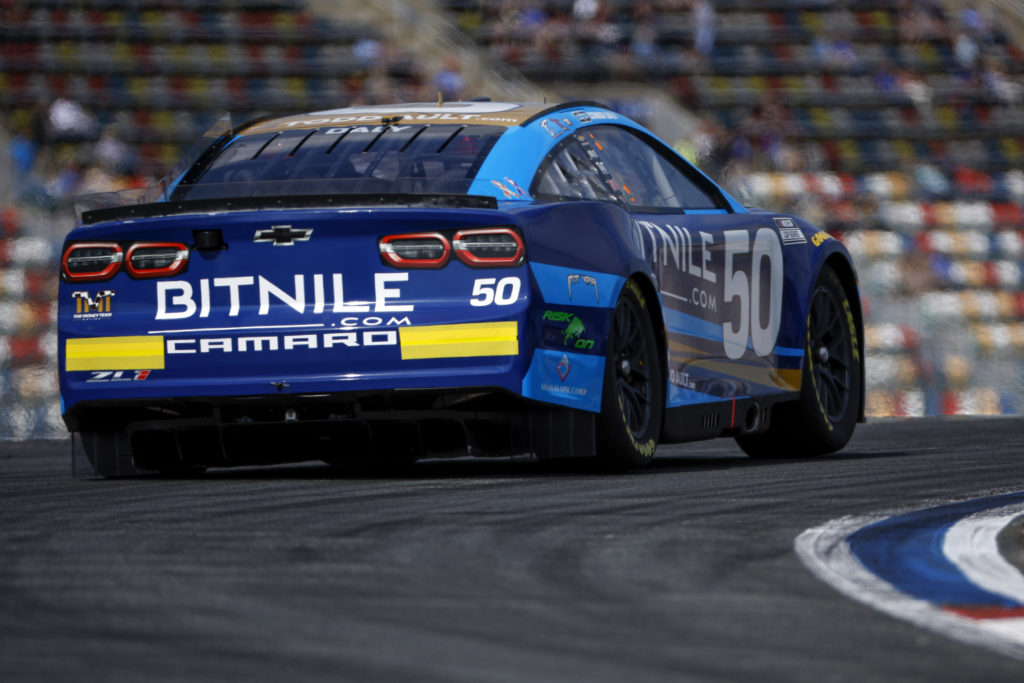
(Photo by Jared C. Tilton/Getty Images)
The results didn’t persuade Daly to quit his day job in IndyCar; he’ll be returning to a full-time gig at Ed Carpenter Racing. But running on the roval at Charlotte whet his appetite for some more seat time in a stock car.
“I’d love to drive an oval, and I’ve always wanted to do the Daytona 500,” he said. “Obviously, we’re going to be focused on the IndyCar program next year. But there are only 17 IndyCar races. So there are a lot of NASCAR races that fit in our off weekends.”
Watch for Daly to don a set of fenders once again.
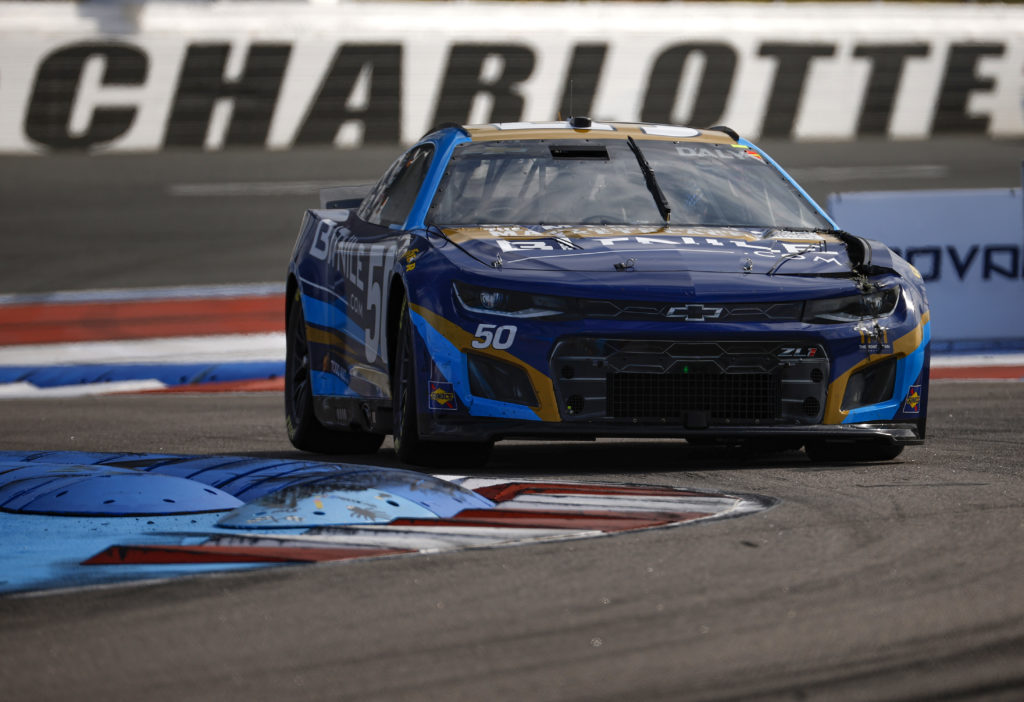
(Photo by Jared C. Tilton/Getty Images)

